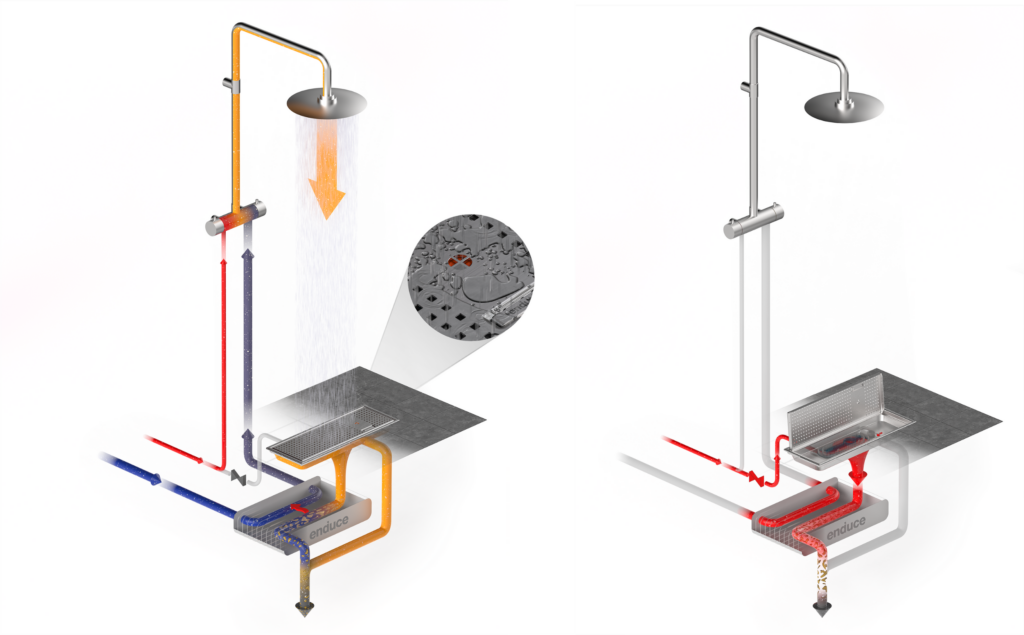The share of total household hot water consumption that takes place in the shower has increased over time, and in 2021 amounted to as much as 82% of hot water consumption according to the Passive House Institute, which in turn refers to the field study from Denmark 2021 and the study "urban energy system 2027". Enduce's calculations (unless otherwise stated) assume a more conservative hot water allocation of 60% to the shower.
The shower combines on average the hottest water flow with by far the longest duration for each tap. Other taps are typically so low in temperature and short in duration that the energy from, for example, kitchens and sinks is absorbed at the tap and pipes on the way to any centralized heat recovery system.
By placing the energy recovery unit in the shower - where most of the hot water energy is used - energy losses to the environment are minimized and we get the highest possible efficiency of energy recovery. This operating principle and location provides, according to independent studies, the best possible conditions for a highly efficient energy recovery from shower and gray water.

